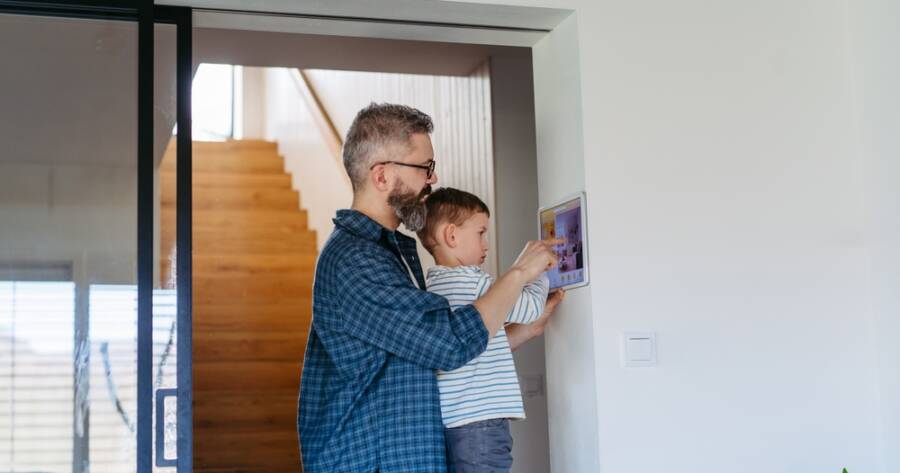Your home should be a place of comfort and security, but in order to truly feel safe, it’s important to take proactive steps in protecting both your family and property. Accidents, break-ins, and natural disasters can all be mitigated with the right precautions. Fortunately, home safety doesn’t have to be complicated, and many protective measures are easy to implement with a bit of effort and planning. Explore some effective ways to safeguard your home and ensure the well-being of everyone inside.
1. Install and Maintain a Security System
One of the most effective ways to protect your home is by installing a security system. Modern security systems come with a variety of features, such as motion sensors, surveillance cameras, alarms, and smart home integration that lets you monitor your property remotely via smartphone or tablet. A well-installed system can deter potential burglars and provide peace of mind knowing your property is constantly under surveillance.
In addition to installing a security system, it’s also essential to regularly maintain and update it. Ensure that cameras are working properly, replace batteries as needed, and test alarms to make sure everything is functional. Security systems should also be integrated with your neighborhood watch programs or local authorities, so in the event of an emergency, help can be dispatched quickly.
2. Secure Doors and Windows
Burglars often enter homes through easily accessible doors and windows, so securing these entry points is essential in maintaining home safety. Start by reinforcing doors with heavy-duty deadbolts, which are more difficult to break through than standard locks. Consider installing a peephole or video doorbell so you can safely identify visitors before opening the door.
Windows should also be secured with high-quality locks. If your windows are easily accessible from the ground, consider adding window bars or using security film that strengthens glass and makes it harder to shatter. For added security, always lock windows and doors when leaving the house, and avoid leaving keys hidden outside.
3. Fire Safety Measures
Fires are a common household hazard, but many incidents can be prevented with the right fire safety measures. Install smoke detectors in every bedroom, hallway, and common area of your home, and test them monthly to ensure they are working properly. Change the batteries in your smoke detectors twice a year, and replace the units every 10 years or as recommended by the manufacturer.
Make sure to have a fire extinguisher in the kitchen, garage, and near any areas where a fire could potentially start, such as near the fireplace or electrical panels. Additionally, have an escape plan in place for your family, particularly for young children or elderly family members. Practice fire drills periodically so everyone knows how to respond in case of an emergency.
4. Prevent Slip and Fall Hazards
Preventing slip and fall accidents is crucial for the safety of everyone in the household, especially young children and elderly family members. Start by keeping walkways, both inside and outside the house, clear of clutter, debris, or any tripping hazards. Ensure that rugs are non-slip or secured with rug pads to prevent them from sliding around.
In bathrooms, use non-slip mats in the tub or shower to prevent falls on wet surfaces. Install grab bars near the toilet and in the shower for additional support. In stairways, ensure that handrails are sturdy and easy to grip. Proper lighting in hallways, staircases, and entryways is essential for safety as well, helping to avoid accidents caused by poor visibility.
5. Childproofing Your Home
For families with young children, childproofing is a must. Start by securing heavy furniture and appliances, such as bookshelves and TVs, to the wall to prevent them from tipping over. Use corner protectors on sharp furniture edges and install safety gates at the top and bottom of stairs.
Cabinets containing cleaning supplies, sharp objects, or medications should be locked with childproof latches. Electrical outlets can be covered with outlet covers to prevent children from sticking their fingers or objects inside. It’s also essential to keep choking hazards like small toys or food out of reach.
6. Protect Your Home from Natural Disasters
While you can’t control natural disasters, you can take steps to reduce the damage they cause. If you live in an area prone to flooding, consider installing sump pumps in basements or lower-lying areas. Elevate valuable electronics and furniture above potential flood levels to protect them from water damage.
In regions prone to severe storms or tornadoes, invest in a safe room or storm shelter to provide your family with a secure place to take cover. Install storm shutters or impact-resistant windows to protect your home from flying debris.
7. Landscape for Safety
Landscaping can also play a role in home safety. Trim back trees and shrubs around windows and entryways to eliminate hiding spots for burglars. Ensure that outdoor lighting is adequate, especially around entrances, walkways, and driveways. Motion-sensor lights can be a great addition to your exterior, providing added security and deterring criminal activity.
Essential Steps for Ensuring the Safety of Your Home and Family
Home safety is essential for protecting your loved ones and ensuring peace of mind. By taking the necessary precautions—installing security systems, securing entry points, practicing fire safety, and childproofing your home—you can reduce risks and create a safe environment for everyone in your household. While it may seem like a lot of work, implementing these measures one step at a time can significantly enhance the security of your home. After all, a little proactive effort can go a long way in preventing potential accidents or disasters and protecting your family and property.

